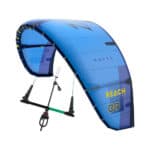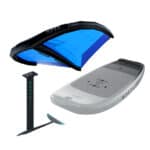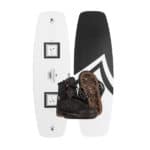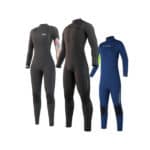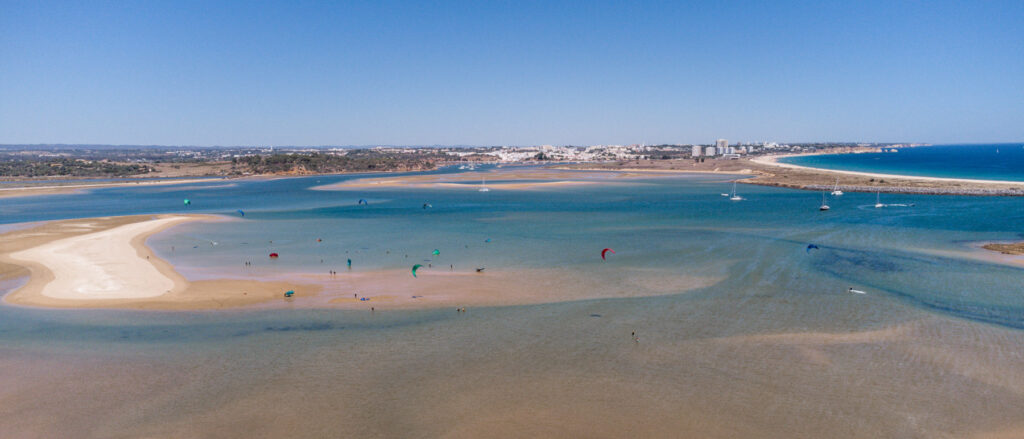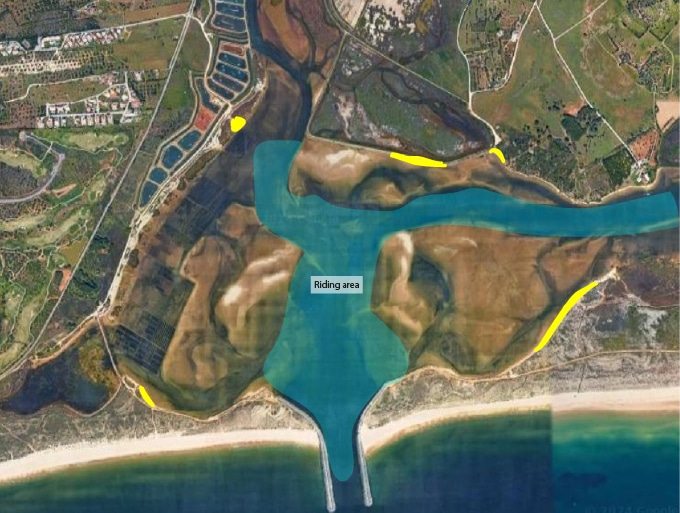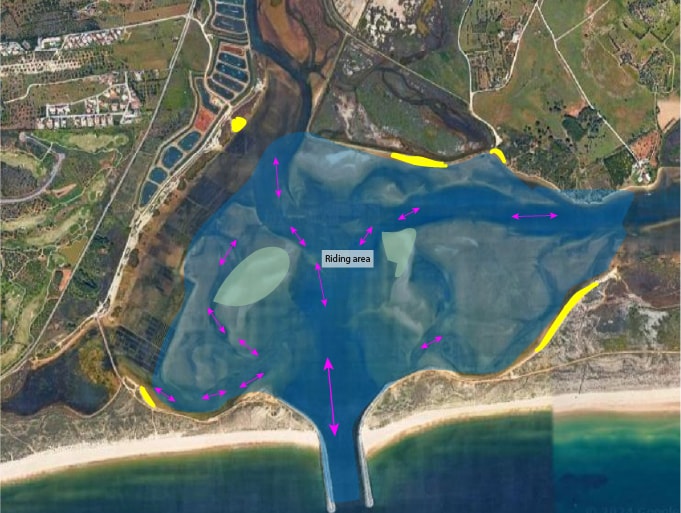kitesurfing guide
Alvor lagoon Kitesurfing spot guide – Lagos Kitesurfing Guide
Welcome to Ria de Alvor, a hidden gem in the heart of the Algarve and undoubtedly a paradise for kitesurfers of all levels. With its vast, shallow waters and consistent winds, Ria de Alvor offers an exceptional environment for beginners looking to catch their first wind and seasoned riders seeking thrilling rides. This guide will walk you through everything you need about kitesurfing in this fantastic spot, from wind conditions to local tips, ensuring you make the most of your visit.
Table of Contents
Ria de Alvor – the best kitesurfing spot in western Algarve
By many considered the best kitesurfing spot next to Lagos, Ria de Alvor, called Alvor Lagoon, is great for not only seasoned kitesurfers but also for beginners. Where flat, shallow waters and consistent north wind allow students to progress quickly in the sport, they also attract lots of freestyle and freeride riders who are taking advantage of glassy flat waters created by sandbanks in the lagoon. But this friendly spot is sometimes not the easiest to handle so let’s dive into specifics:
Wind Direction and Strength at Alvor Lagoon
Alvor Lagoon is an idyllic setting for kitesurfers, thanks to its accommodating winds from both the south and north. During the prime kitesurfing months from April to September, the North/Northwest breezes take center stage. These winds are not only dominant but also provide a reliable force, making summer the peak season for kitesurfing enthusiasts.
Analyzing the Wind Directions:
- West and East Winds: The lagoon’s geographical layout means West winds can be unpredictably gusty. In contrast, East winds are obstructed mainly by the town of Alvor itself, making these directions less favorable for kitesurfing.
- South Winds: In winter, the South wind is a popular choice, with variations from Southeast, influenced by the Levante in Tarifa, to Southwest, often ushered in by storms. Summer sees these winds becoming lighter and less dependable, offering in the mornings a gentle 12-15 knots light winds pushed by the morning breeze but with a tendency to drop unexpectedly.
- North Winds: Unquestionably, the North direction winds, especially the Northwest/North breezes, offer the best conditions for kitesurfing in the lagoon. Driven by thermal effects, these winds reliably start in the afternoon, providing solid and steady conditions until sunset. While their gusty offshore nature near the channel demands cautious navigation, they can pick up to 30 + knots on sunny days, delivering lots of fun for big air enthusiasts.
Parking and Launching Spots
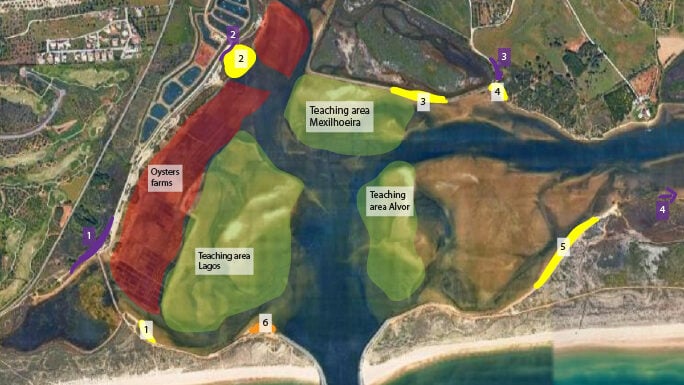
Ria de Alvor offers distinct launching experiences from its Lagos and Alvor sides, each with unique access points depending on your approach. For convenience, there are four primary parking areas, color-coded in purple on the map for easy identification:
- Lagos Parking Spot – This is the most favored parking spot on the Lagos side of the lagoon, offering easy access to nearby launching points.
- Fish Farms Parking Spots—Located just past the fish farms, these spots provide additional parking options for those coming from Lagos.
- Rocha Delicada Parking Spot – Accessible by taking a turn at the roundabout from Mexilhoeira, this spot caters to those approaching from the Alvor side.
- Praia de Alvor Parking – Near the Restinga restaurant or Alvor marina, this area is ideal for visitors coming directly to the Alvor side of the lagoon.
Based on your parking choice, Alvor Lagoon has five designated launching areas for kitesurfers, highlighted in yellow on the map for your convenience:
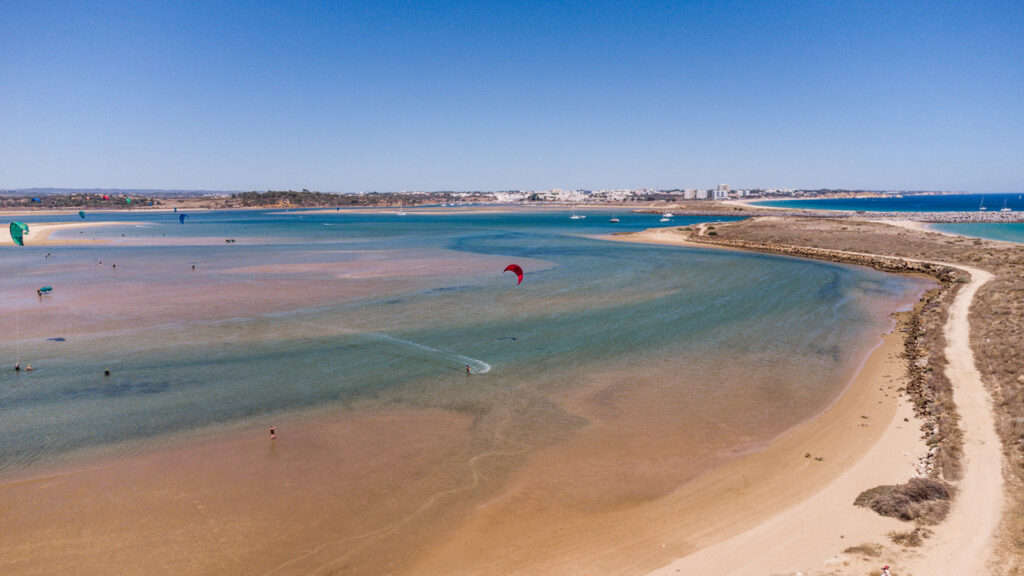
- Lagos Kite Beach (above) is the premier launch site on the lagoon’s western flank. A brief 5-minute walk from the parking area—though be mindful of a few tricky crossings over damaged paths, especially during high tide when currents can be deceptive—brings you to this popular spot. Throughout the summer, Lagos Kite Beach becomes busy with kitesurfers, and it’s a kite school meeting spot. However, vigilance is key here as the winds can present challenges, and with deeper waters lurking close to the shore, it’s crucial to steer clear of the rocks that lie in wait.
- Fish farm corner – a meeting point for some kitesurfing schools, but it’s not really recommended for independent kitesurfers as it’s very hard to come back between the oyster farms.
- Mexilhoeira ( Mexico) – lunching beach next to the rock path. Most local kitesurfers go there during summer as schools do not take it over. Be cautious, tho in heights exceeding 3m, this spot is gone underwater, which makes it very tricky to land.
- Windsurf spot – called as it’s very tricky to launch a kite there because of wind shadows, but it’s ideal for windsurfers to rig their sail and enter the lagoon.
- Alvor Lagoon Beach is the most underrated spot to launch the kite because of its long walk to the parking. Still, it seems to be the best option for semi-independent kitesurfers as it’s easiest to come back to it as the wind passing through the lagoon is an onshore direction to the beach.
- Safety beach – not a launching but rather a landing spot used by everyone who is struggling in upwind riding and wants to avoid the channel.
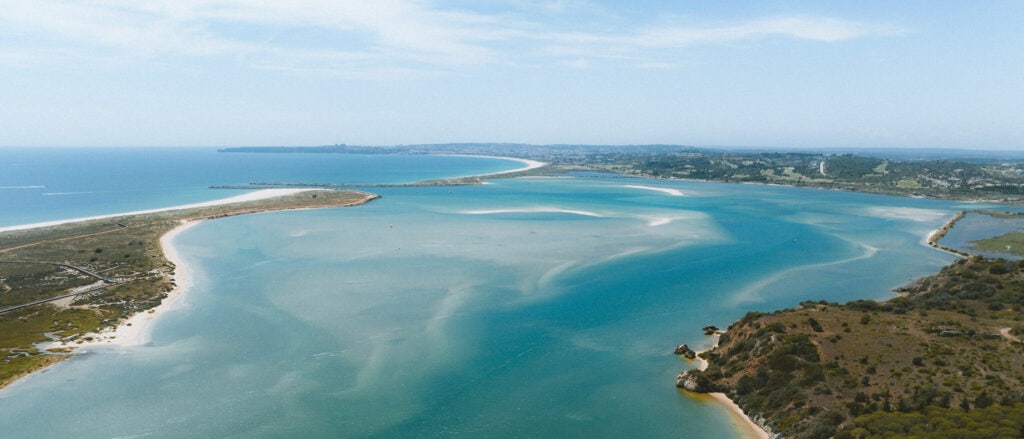
Tides and Currents
Understanding the tides and currents is crucial for a safe and enjoyable kitesurfing experience in Ria de Alvor. The lagoon offers the best conditions at mid-tide, with lower currents and ample flat water areas. High tide can also provide excellent conditions, especially for independent riders, as the water covers the sandy bottom, creating a vast riding area.
TIP: Avoid going to the lagoon on mid to low tide as it’s crowded with schools, especially if you are a beginner, because only the riding area is close to the channel.
The four main current areas in the lagoon are created by four “rivers” ( marked with pink arrows). Understanding how they work can save you a lot of trouble, especially if the wind is lighter than expected. While the incoming tide is rather beneficial as it pushes riders against the wind, which makes riding upwind even easier, the going out tide can cause many troubles for semi-intermediate riders.
Especially when it’s spring tide time and tide differences are big, which results in a lot of currents.
We recommend avoiding riding close to the channel or going out on spring tide, as the currents are strong there and can result in being pulled out to the open sea.
TIP: If you crash into the “river,” try to pick up the kite as fast as possible and body drag outside of the current.
Things to Watch Out For
- Oyster farms are very visible on low tide but hidden on high tide. The owners do not appreciate anyone floating around them, and there are many things sticking out of the water, which might be dangerous. Simply put: Don’t ride above oyster farms.
- Rocks on the south parts of the lagoon – avoid riding close to the rocks as currents are pretty strong next to them, and sudden gusts can launch you directly into them. Just stay away from them.
- Fisherman’s cages show up at mid-tide; looking out for them might save your feet from scratches when you step into them.
- Divers and fishermen are seen mainly on the Alvor side, close to the windsurfing spot; riding next to them is very dangerous, especially for divers. Always keep some space around them and avoid getting tangled in fishing lines.
- Boats – the summer lagoon gets busy not only with watersport enthusiasts. Channel is becoming a busy path in and from Alvor, so keep that in mind to avoid tangling with a boat or a yacht.
Where Should You Kite in Alvor Lagoon?
High Tide – Riders paradise
During high tide, the lagoon becomes an expansive water playground, perfect for independent riders and those looking to practice new tricks. Especially when sand bars are not hidden, you can find a few glassy flat water spots perfect for takeoffs.
The best setup is either on the Lagos kite beach or Alvor Lagoon beach.
Setting up on Lagos’s side is safe and easy (beside the high tide path crossing ), but you should be ready to land on the safe beach (6) in case the wind dies.
Despite the longer walk, we recommend the Alvor side, as the beach is very safe and easy to return to. This is the best place for kitesurfers who rent their equipment and want to avoid any trouble.
Mid-Tide – Perfect for learning
Mid tide offers the ideal balance between space and safety. Look for areas in the center of the lagoon, where you’ll find flat water with minimal current. This is the perfect time for beginners and intermediate riders to hone their skills. You can set up in all the spots, but be sure you know if the tide is going out or coming up, not to be surprised.
Low Tide – be smart to avoid crowds
The low tide does not leave much water in the lagoon, especially if the tide is lower than 1m. If you are setting up on a low tide, remember that your clothes should be left far from the water line. While there is not much space to ride, if the schools are gone, you can find some epic flat water areas ideal for practicing freestyle.
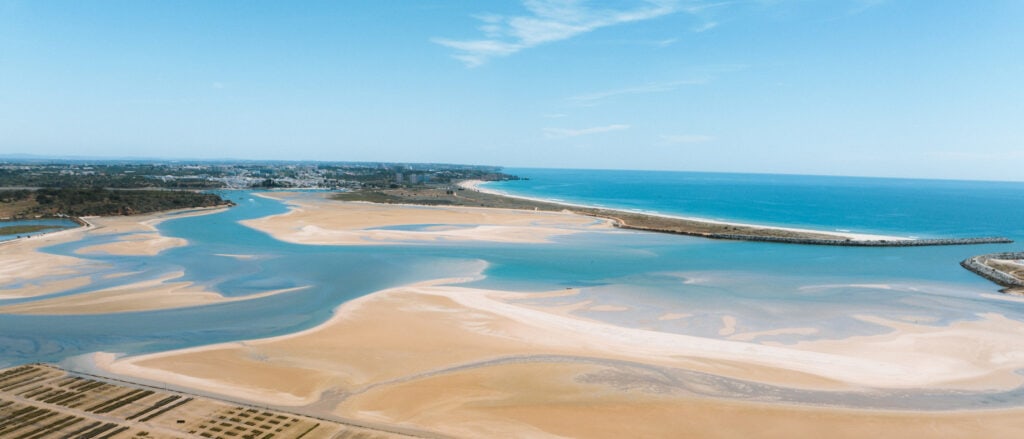
Local tips
- Wind can get very strong —on hot summer days when low tide is in the evening, wind in the lagoon can exceed 30 knots. Keep some depower area or smaller kites on the beach for those moments. If you only brought big kites, we have a couple of small-size kites for rent in the shop
- Plan your session around the tides more than the wind. Because of the big tide differences, we recommend planning more sessions around tides, especially coming from the Lagos side, so as not to be surprised by the raging river on the crossing. The best thing is always to use incoming tides to kite and be safe.
- Avoid high to low spring tides – on a day when the tide difference is more than 3 m, there is a lot of water coming and going from the lagoon, which results in lots of currents.
- Look for sandbanks and glassy flat water spots, but respect the training of their riders.
- Bring water and snacks to the lagoon – more energy = longer session.
For more tips, come to the Wakepark to visit a shop for a chat 😉
Frequently asked questions about the lagoon
-
Can I rent equipment near Alvor Lagoon?
Yes, there are schools and one Kite shop that rents kite equipment in Lagos area. Shop offers whole day rentals which are great for those who want to kite a lot in the lagoon.
-
What’s the best time of year to go?
The windy season is from April to October, with consistent winds and comfortable temperatures. The peak season is May to August with the most consistent winds.
-
Is Alvor Lagoon suitable for beginners?
Absolutely! The lagoon’s calm waters and generally consistent winds create an ideal setting for newcomers to the sport. While the lagoon is welcoming to beginners, it does have its nuances, so we advise first-time visitors to take a lesson.
-
What Kite sizes do I need to kitesurf in Alvor Lagoon?
It all depends on the season, but the lagoon can get very windy. In the summer, most sizes you can see on the water are between 9 and 12 m, with occasional 7s coming out on strong Nortada days. For female riders we recommend 7 and 9m for peak season.

